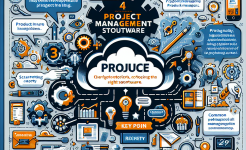IPD (Integrated Product Development) is a comprehensive product development framework that aims to improve product quality, reduce development time, and enhance overall product competitiveness. However, like any complex process, it is fraught with various risks. Understanding these risks and having effective response methods is crucial for the successful implementation of IPD. Risk management in the IPD process is not just about identifying potential problems but also about formulating strategies to mitigate, avoid, or transfer these risks. By proactively managing risks, organizations can ensure that their product development efforts stay on track and achieve the desired goals.
In the IPD process, risks can arise from multiple sources, including technological uncertainties, market dynamics, internal organizational issues, and external factors such as regulatory changes. These risks can have a significant impact on the project schedule, budget, and the final product's quality. For example, a technological risk such as the failure of a new component to perform as expected can delay the entire product launch, increase costs due to rework, and damage the company's reputation. Therefore, it is essential to have a systematic approach to risk management in the IPD process.
Technological Risks and Responses
Technological risks are among the most common and potentially damaging in the IPD process. New technologies are often at the heart of product innovation, but they also bring uncertainties. One major technological risk is the unproven nature of a technology. When a company decides to incorporate a new and untested technology into a product, there is a high chance that it may not work as expected. This could lead to performance issues, compatibility problems, or even complete product failure.
To address this risk, companies should conduct thorough technology research and feasibility studies before integrating a new technology. This involves evaluating the technology's maturity, reliability, and scalability. Additionally, building prototypes and conducting early-stage testing can help identify potential issues and allow for timely adjustments. For example, if a company is considering using a new type of battery technology in a mobile device, it should first build a prototype with the new battery and test its performance under various conditions.
Another technological risk is the rapid pace of technological change. In industries such as electronics and software, technologies evolve at an astonishing rate. A product that is innovative at the start of the development process may become obsolete by the time it reaches the market. To counter this, companies need to have a flexible product development strategy. They should continuously monitor the technological landscape, stay updated on emerging trends, and be prepared to make changes to the product design if necessary. This may involve having a modular product design that allows for easy integration of new technologies as they become available.
Market Risks and Responses
Market risks play a significant role in the success or failure of IPD projects. One of the primary market risks is changing customer needs. Customer preferences can shift rapidly, and what was in demand a few months ago may no longer be relevant by the time the product is launched. This can result in poor sales and a waste of development resources. To manage this risk, companies need to invest in market research throughout the IPD process.
Regular market surveys, focus groups, and customer feedback sessions can help companies stay attuned to changing customer needs. By understanding what customers want and expect, companies can make informed decisions about product features, design, and pricing. For instance, a clothing brand may conduct surveys to find out the latest fashion trends and incorporate those elements into its new product line. This way, the brand can increase the likelihood of its products appealing to the target market.
Another market risk is intense competition. In many industries, the market is saturated with competitors offering similar products. A new product may struggle to gain market share if it does not stand out. To address this, companies should focus on creating a unique value proposition for their products. This could involve offering better quality, more innovative features, or a more competitive price. Additionally, effective marketing and branding strategies are essential to differentiate the product from competitors. A company might highlight the environmental sustainability of its products in its marketing campaigns to attract environmentally conscious customers.
Organizational Risks and Responses

Organizational risks can also pose significant challenges to the IPD process. One common organizational risk is poor communication and collaboration among different teams involved in the product development. In an IPD environment, multiple teams such as engineering, marketing, and manufacturing need to work together seamlessly. However, differences in goals, priorities, and communication styles can lead to misunderstandings and delays.
To overcome this risk, companies should establish clear communication channels and promote a culture of collaboration. Regular cross-functional meetings, shared project management tools, and open communication policies can help improve information flow and coordination among teams. For example, using a project management software that allows all teams to access and update project status in real-time can enhance transparency and reduce the chances of miscommunication.
Another organizational risk is a lack of skilled resources. The IPD process requires a diverse set of skills, including technical expertise, project management skills, and market knowledge. If a company does not have the right talent in place, it can hamper the progress of the project. To address this, companies should invest in training and development programs to upskill their employees. They can also recruit external experts when necessary to fill skill gaps. For instance, if a company lacks expertise in a particular emerging technology, it can hire consultants or bring in new employees with the required skills.
External Risks and Responses
External risks, which are beyond the control of the organization, can also impact the IPD process. One significant external risk is regulatory changes. Different industries are subject to various regulations, and changes in these regulations can require significant modifications to the product design or development process. For example, in the pharmaceutical industry, new drug approval regulations can delay the launch of a product if the company fails to meet the requirements.
To manage this risk, companies should stay informed about regulatory developments. They should have a dedicated team or individual responsible for monitoring regulatory changes and ensuring compliance. Early engagement with regulatory authorities can also help companies understand the requirements and plan their product development accordingly. This may involve submitting pre-submission inquiries to get feedback on the product's compliance potential.
Another external risk is supply chain disruptions. Events such as natural disasters, political instability, or labor strikes can disrupt the supply of raw materials or components, leading to production delays. To mitigate this risk, companies should diversify their supply chain sources. Having multiple suppliers for critical components can reduce the impact of a disruption from a single source. Additionally, maintaining safety stocks and having contingency plans in place can help ensure continuity of production. For example, a car manufacturer may keep a certain amount of essential parts in stock to avoid production halts in case of a supply chain disruption.
Conclusion
In conclusion, risk management is an integral part of the IPD process. The various risks, including technological, market, organizational, and external risks, can have a profound impact on the success of product development projects. By identifying these risks early and implementing appropriate response strategies, companies can increase the likelihood of achieving their product development goals.
Effective risk management in the IPD process requires a proactive and systematic approach. It involves continuous monitoring, evaluation, and adjustment of risk response plans. Companies should also foster a risk-aware culture where all employees are encouraged to identify and report potential risks. This collaborative effort can help in addressing risks promptly and minimizing their negative consequences.
Moreover, as the business environment continues to evolve, new risks will emerge. Therefore, companies need to stay agile and adaptable in their risk management practices. By learning from past experiences and keeping up with industry best practices, organizations can better manage risks in the IPD process and gain a competitive edge in the market. Overall, investing in risk management is not just a cost but an essential investment in the long-term success of product development initiatives.
ARTICLE TITLE :Risk management and response methods in the IPD process ,AUTHOR :ITpmlib

















